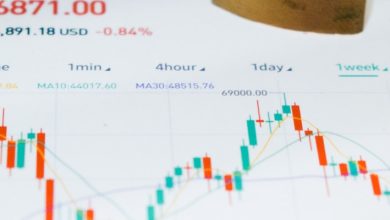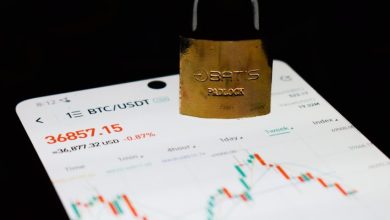The Impact of Macroeconomic Trends on Crypto Prices

- The relationship between economic indicators and cryptocurrency prices
- How inflation rates affect the value of cryptocurrencies
- The role of government policies in shaping the crypto market
- Impact of interest rates on the volatility of digital assets
- Global economic events and their influence on crypto prices
- The correlation between stock market performance and cryptocurrency values
The relationship between economic indicators and cryptocurrency prices
There is a clear relationship between various economic indicators and the prices of cryptocurrencies. Factors such as inflation, interest rates, GDP growth, and unemployment rates can all impact the value of digital assets. For example, when inflation is high, investors may turn to cryptocurrencies as a hedge against inflation, driving up prices. On the other hand, if interest rates rise, it may become more expensive to invest in cryptocurrencies, leading to a decrease in prices.
Moreover, economic uncertainty tends to have a significant impact on cryptocurrency prices. During times of economic instability, investors may flock to digital assets as a safe haven investment, causing prices to soar. Conversely, if the economy is performing well and traditional investments are yielding high returns, the demand for cryptocurrencies may decrease, leading to a drop in prices.
Overall, it is essential for investors to closely monitor economic indicators and trends to make informed decisions about their cryptocurrency investments. By staying informed about macroeconomic developments, investors can better anticipate potential price fluctuations and adjust their investment strategies accordingly.
How inflation rates affect the value of cryptocurrencies
One of the key macroeconomic factors that can influence the value of cryptocurrencies is inflation rates. Inflation refers to the rate at which the general level of prices for goods and services is rising, leading to a decrease in purchasing power. When inflation rates are high, the value of traditional fiat currencies tends to decrease, as it takes more units of currency to buy the same goods and services.
On the other hand, cryptocurrencies are often seen as a hedge against inflation due to their limited supply. For example, Bitcoin has a fixed supply cap of 21 million coins, which means that it cannot be inflated like traditional currencies. This scarcity can appeal to investors looking to protect their wealth from the erosive effects of inflation.
When inflation rates rise, investors may flock to cryptocurrencies as a store of value, driving up their prices. However, if inflation rates are low and stable, the appeal of cryptocurrencies as an inflation hedge may diminish. It is essential for cryptocurrency investors to monitor inflation trends and their potential impact on the value of their holdings.
The role of government policies in shaping the crypto market
Government policies play a crucial role in shaping the cryptocurrency market. Regulations and laws can have a significant impact on the price and adoption of cryptocurrencies. For example, when a government announces a ban on the use of cryptocurrencies, it can lead to a sharp decline in prices as investors panic and sell off their holdings. On the other hand, when a government introduces favorable regulations that support the use of cryptocurrencies, it can boost investor confidence and lead to an increase in prices.
Government policies can also influence the overall sentiment in the market. For instance, if a government expresses support for blockchain technology and cryptocurrencies, it can create a positive outlook among investors, which can drive up prices. Conversely, if a government expresses skepticism or concern about cryptocurrencies, it can lead to a decrease in prices as investors become more cautious.
Impact of interest rates on the volatility of digital assets
Interest rates have a significant impact on the volatility of digital assets. When interest rates rise, the cost of borrowing increases, leading to a decrease in investment in digital assets. This can result in a decrease in demand for cryptocurrencies and a subsequent drop in prices. On the other hand, when interest rates are low, borrowing costs are lower, making it more attractive for investors to put money into digital assets. This increased demand can drive up prices and lead to higher volatility in the market.
Additionally, changes in interest rates can also affect the overall economy, which in turn impacts the value of digital assets. For example, if interest rates are raised to combat inflation, this could slow down economic growth and reduce the value of cryptocurrencies. Conversely, if interest rates are lowered to stimulate economic activity, this could lead to an increase in demand for digital assets and drive prices higher.
In summary, interest rates play a crucial role in determining the volatility of digital assets. Investors should closely monitor macroeconomic trends and central bank policies to gauge the potential impact on cryptocurrency prices. By understanding how interest rates influence the market, investors can make more informed decisions when trading digital assets.
Global economic events and their influence on crypto prices
Global economic events have a significant impact on the prices of cryptocurrencies. These events include factors such as interest rate changes, inflation rates, geopolitical tensions, and economic growth. When there is uncertainty in the global economy, investors often turn to alternative assets like cryptocurrencies as a hedge against traditional markets.
For example, when there is a decrease in interest rates by central banks, it can lead to an increase in the price of cryptocurrencies. This is because lower interest rates make traditional investments less appealing, prompting investors to look for higher returns elsewhere. As a result, the demand for cryptocurrencies may rise, driving up their prices.
Similarly, inflation rates can also influence crypto prices. In times of high inflation, the value of fiat currencies decreases, leading investors to seek out assets that can preserve their purchasing power. Cryptocurrencies, with their limited supply and decentralized nature, are seen as a store of value in such scenarios, causing their prices to increase.
Geopolitical tensions can also impact crypto prices. When there is instability in global politics, traditional markets may experience volatility. In these situations, investors may flock to cryptocurrencies as a safe haven asset, driving up their prices. Economic growth is another factor that can influence crypto prices. During periods of economic expansion, investors may have more disposable income to invest in cryptocurrencies, leading to an increase in demand and prices.
The correlation between stock market performance and cryptocurrency values
There is a noticeable correlation between the performance of the stock market and the values of cryptocurrencies. When the stock market is performing well, investors tend to have more confidence in the economy, leading to increased investment in riskier assets such as cryptocurrencies. On the other hand, during times of stock market volatility or economic uncertainty, investors may pull back from cryptocurrencies and seek safer investment options.
This correlation can be seen in the way that both traditional financial markets and cryptocurrencies respond to macroeconomic trends. For example, when there is positive economic news such as strong GDP growth or low unemployment rates, both the stock market and cryptocurrency values may rise. Conversely, negative economic indicators can lead to a decrease in both stock prices and cryptocurrency values.
It is important for investors in the cryptocurrency market to pay attention to macroeconomic trends and how they may impact the value of their investments. By staying informed about factors such as interest rates, inflation, and overall market sentiment, investors can make more informed decisions about when to buy or sell their cryptocurrencies based on the broader economic landscape.





